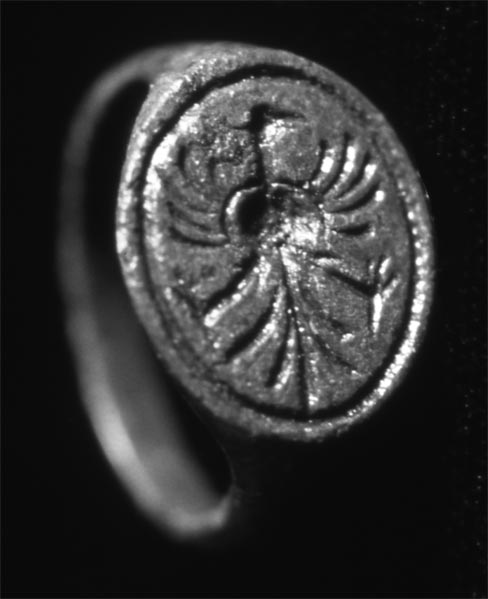Media Review
Historic Jamestowne: Unearthing America's Birthplace
http://historicjamestowne.org/
Maintained by APVA Preservation Virginia in partnership with the National Park Service; accessed April 19-23, 2007.
Jamestown Rediscovery
http://www.apva.org/jr.html
[updated address: http://apva.org/rediscovery/]
Maintained by APVA Preservation Virginia, accessed April 19-23, 2007.
In preparation for the 400th anniversary of the first permanent English settlement in North America, APVA Preservation Virginia and the National Park Service, longtime partners and stewards of the Jamestown site, launched the Historic Jamestowne initiative to "preserve, protect and promote the original site" and "tell the story of the role of the three cultures, European, North American and African, that came together to lay the foundation for a uniquely American form of democratic government, language, free enterprise and society." Visitors to the Historic Jamestowne website will find it a handsome, clearly organized, and readily accessible entry into 17th-century life at Jamestown and contemporary efforts to unearth the colony's long-buried stories.
Visitors will have no problems navigating through Historic Jamestowne. Designed to read like a newsletter, the website prominently displays page links just below the banner. Each page includes a comfortable mix of information and graphics. Not too cluttered and easy to digest, the pages leave the reader wanting to dig deeper.
The Historic Jamestowne homepage features information on upcoming events and ongoing archeological investigations. Especially fun for visitors is the "Featured Find" window, which shows a recovered Jamestown artifact.(Figure 1) A brief history of the object accompanies the photograph, often discussing its minute characteristics. An interactive magnifying glass enables visitors to zoom in for a closer look. Visitors can refresh the page to see another artifact or follow the links to a catalog page with more "featured finds," such as a silver ear picker (a status symbol in the 17th century; not so much in the 21st) and a heraldic Bartmann Jug.
In other sections of the website, readers can learn about the history of Jamestown and buy tickets for tours of the James Fort excavations and the site of the original settlement. For a fee, researchers may access biographic information about each known colonist who came to Jamestown between 1607 and 1624. Unfortunately, the introduction to APVA's Jamestown Biographies Project does not provide a summary on the Jamestown community, such as how many colonists the project historians have identified, or in what ways the records may speak to gender, race, and social status among the colonists.
The website also features interactive exercises that take visitors through the basic steps of excavation, artifact identification, and analysis. In one exercise, visitors use an "e-trowel" to uncover five artifacts in a simulated square test pit. Next, the visitor catalogs the artifacts using a virtual lab manual, microscope, and ruler. Based on the information collected, the visitor can then determine the earliest date of the artifacts. This exercise requires a fair bit of reasoning and seems best suited to high school students and adults.
Pages about "The Dig" itself cover recent news from the archeologists excavating James Fort, the colony's famous palisaded fortification. Readers can pull up monthly field reports from October 2003 to the current season, which is a great way for interested non-archeologists to learn about archeological method, new finds, and changing interpretations. The current excavation site plan, which is available on some secondary pages, is such a useful orientation tool that it ought to appear prominently on the main page of "The Dig."
 |
A signet ring attributed to William Strachey is one of the "Featured Finds" on the Historic Jamestowne website. (Courtesy of APVA Preservation Virginia.) |
The popular Historic Jamestowne website is linked with Jamestown Rediscovery, the official website of the archeological investigations at James Fort. Simpler in design than its sister site, Jamestown Rediscovery includes historical and visitor information and links to exhibits. Readers can also download interim field reports from the site. An interactive map and key of the fort excavation area at Jamestown helps with site orientation and makes it possible for readers to share in the archeological discoveries of the past 10 years. Elsewhere on the site, readers will find the Dale House exhibit interesting, and will learn, for example, why copper was vital to English-Powhatan relations and that the colonists dined often on turtles.
The world will travel in person and online to Jamestown this year. Historic Jamestowne is a good point of departure for the public to begin its journey back in time and place. Jamestown Rediscovery is better suited to feature professional accounts of the ongoing archeological investigations, artifact analysis, and reconsidered historical hypotheses. APVA and the National Park Service would do well to streamline Historic Jamestowne and Jamestown Rediscovery so that each website fills a separate but linked role in teaching and commemorating the Jamestown story and the remarkable archeological efforts underway.
Tanya M. Gossett
American Battlefield Protection Program
National Park Service
